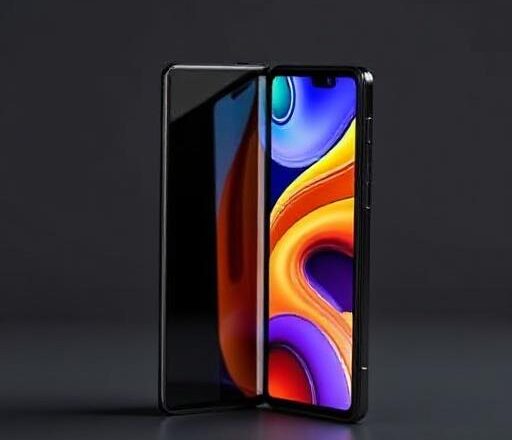Introduction
Foldable smartphones are no longer futuristic experiments. In 2025, they are mainstream devices, competing directly with traditional flagship phones. Samsung, Google, Motorola, Honor, Oppo, and even smaller challengers now offer foldables at a variety of price points. According to Counterpoint Research, global foldable shipments are projected to surpass 30 million units in 2025, up from just 3 million in 2019.
But with so many models on the market, each boasting unique designs, hinge systems, and display technologies, the question remains:
👉 Which foldable phone is actually the right choice for you?
This long-form guide explores the entire foldable landscape — including device categories, durability, performance, cameras, pricing, software experiences, and future outlooks — so you can make the most informed decision possible.
1. The Evolution of Foldable Phones
From Novelty to Necessity
When Samsung launched the first Galaxy Fold in 2019, foldables were fragile, experimental, and extremely expensive. Reviewers complained about fragile plastic screens, visible creases, and questionable longevity.
Fast forward to 2025, and foldables have matured dramatically:
-
Stronger hinges rated for 300,000+ folds.
-
Ultra-thin glass (UTG) reinforced with self-healing coatings.
-
Water resistance ratings (IPX8 and beyond) on many models.
-
Software tailored for multitasking — not just stretched apps.
Foldables are no longer about being flashy; they’re about practical productivity and design flexibility.
2. Foldable Phone Categories in 2025
Not all foldables are built the same. The market has stabilized into two major categories:
a. Book-Style Foldables
-
Examples: Samsung Galaxy Z Fold 6, Honor Magic V3, Google Pixel Fold 2
-
How it works: Opens like a book, revealing a large tablet-like inner display.
-
Strengths:
-
Excellent for multitasking and productivity.
-
Great for watching movies, editing documents, or creative work.
-
-
Weaknesses:
-
Bulkier and heavier than standard smartphones.
-
More expensive ($1,600–$2,200+).
-
b. Clamshell Foldables
-
Examples: Samsung Galaxy Z Flip 6, Motorola Razr 2025, Oppo Find N5 Flip
-
How it works: Compact “flip phone” design that folds in half vertically.
-
Strengths:
-
Ultra-portable and pocket-friendly.
-
Stylish designs appeal to younger buyers.
-
Lower price points ($999–$1,300).
-
-
Weaknesses:
-
Smaller batteries.
-
Cameras often weaker than flagship slab phones.
-
Quick Takeaway:
If you want productivity → Book-style.
If you want style + portability → Clamshell.
3. Key Buying Factors to Consider
When choosing a foldable, here are the core aspects to evaluate:
a. Display Quality & Durability
-
Look for UTG with protective coatings to resist scratches.
-
Some 2025 models feature self-healing polymers that reduce visible marks.
-
Pay attention to hinge reliability — Samsung and Honor now guarantee 300k+ folds.
b. Battery Life & Charging
-
Book-style devices often pack 4,500–5,500 mAh batteries.
-
Clamshells average 3,700–4,000 mAh — expect shorter screen-on time.
-
Charging speeds range from 25W (Samsung) to 120W (Chinese OEMs like Oppo and Honor).
c. Software & Multitasking
-
Samsung One UI leads in foldable software, with drag-and-drop multitasking and floating windows.
-
Google’s Pixel Fold 2 integrates seamlessly with Android AI tools.
-
Honor and Oppo offer highly optimized split-screen features.
d. Camera Performance
-
Historically, foldables sacrificed camera quality for form factor.
-
In 2025, book-style foldables are approaching parity with flagships.
-
Clamshells are still weaker — good for casual photography, but not flagship-level.
e. Price, Longevity & Resale Value
-
Expect to pay:
-
$999–$1,300 for clamshells.
-
$1,600–$2,200 for book-style foldables.
-
-
Foldables depreciate faster than slab phones — but trade-in programs (Samsung, Motorola) can offset costs.
4. The Best Foldables of 2025
Here are the top-rated foldables in 2025 across different use cases:
-
Best Overall (Book-Style) → Samsung Galaxy Z Fold 6
-
Best Clamshell → Motorola Razr 2025
-
Best Value → Honor Magic V3
-
Best Software Experience → Google Pixel Fold 2
-
Most Stylish → Oppo Find N5 Flip
5. Foldables vs Traditional Flagships
If you’re torn between buying a foldable or a standard flagship like the iPhone 16 Pro or Galaxy S25 Ultra, here’s how they compare:
-
Foldables: Offer multitasking, portability, and futuristic design.
-
Traditional Flagships: Offer more refined cameras, longer battery life, and proven durability.
Verdict: Foldables are for those who want innovation and versatility, while traditional flagships remain the safe bet for camera-first buyers.
6. Who Should (and Shouldn’t) Buy a Foldable
Ideal Buyers:
-
Professionals & Students → Book-style foldables replace tablets.
-
Frequent Travelers → One device for work + entertainment.
-
Trendsetters → Clamshells are fashion-forward.
Who Should Wait:
-
Budget-Conscious Users → Prices are still high.
-
Camera Enthusiasts → iPhones and slab flagships still lead.
-
Heavy Gamers → Some foldables throttle under extended load.
7. The Future of Foldables
-
Apple’s Foldable iPhone → Rumored for 2026, expected to bring mainstream adoption.
-
Cheaper Models → By 2026–27, mid-range foldables could fall below $800.
-
Durability Gains → Creases are shrinking, screens becoming more scratch-resistant.
-
Wearable Hybrids → Early concepts suggest foldables could evolve into rollables and stretchables.
Conclusion
Buying a foldable phone in 2025 is about more than just owning the latest gadget — it’s about finding the right form factor for your lifestyle.
If you need productivity and multitasking, go for a book-style foldable like the Galaxy Z Fold 6.
If you want portability and flair, a clamshell like the Motorola Razr 2025 is a perfect fit.
The bottom line: Foldables are no longer experimental — they’re the future of smartphones.
